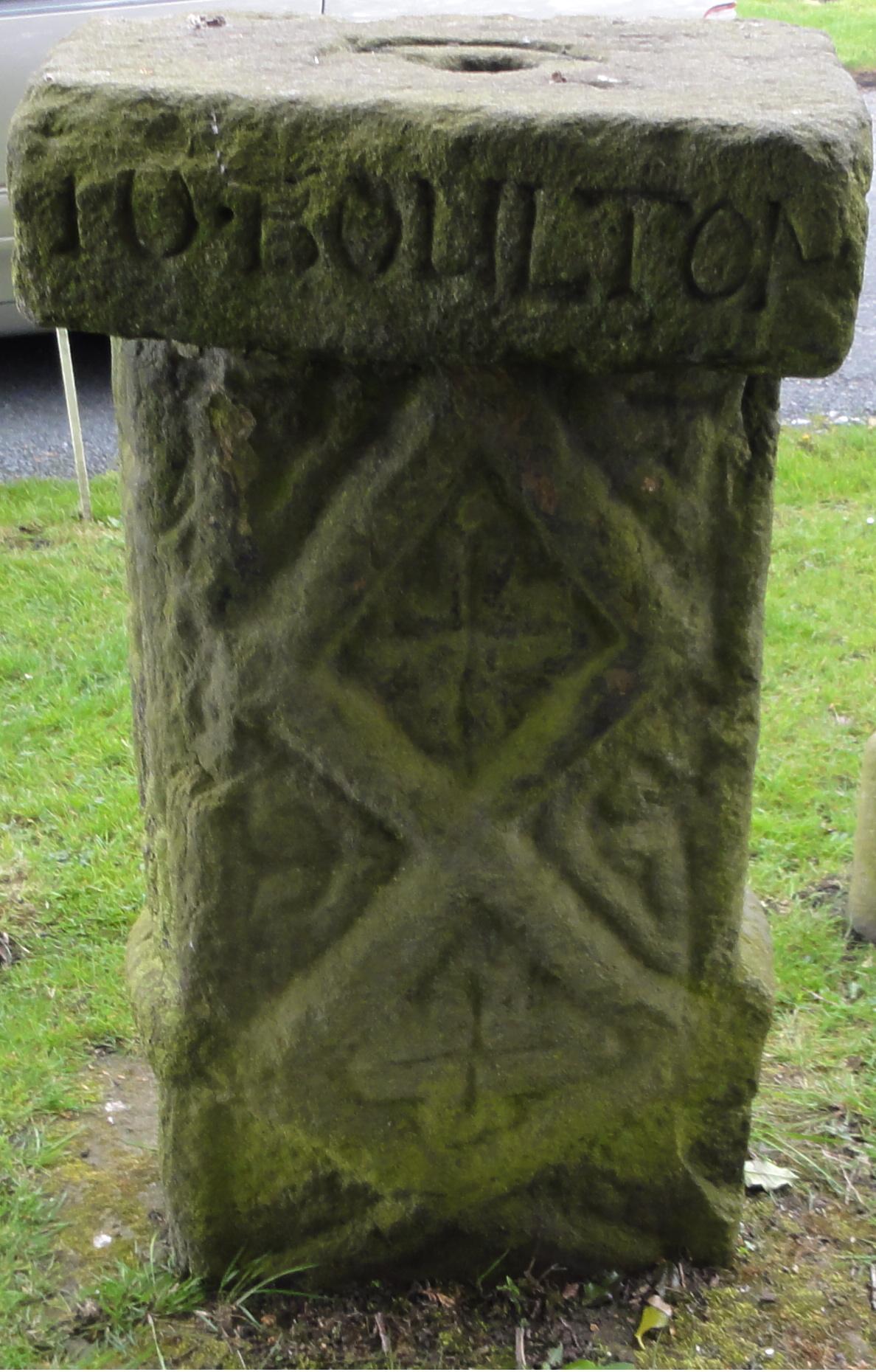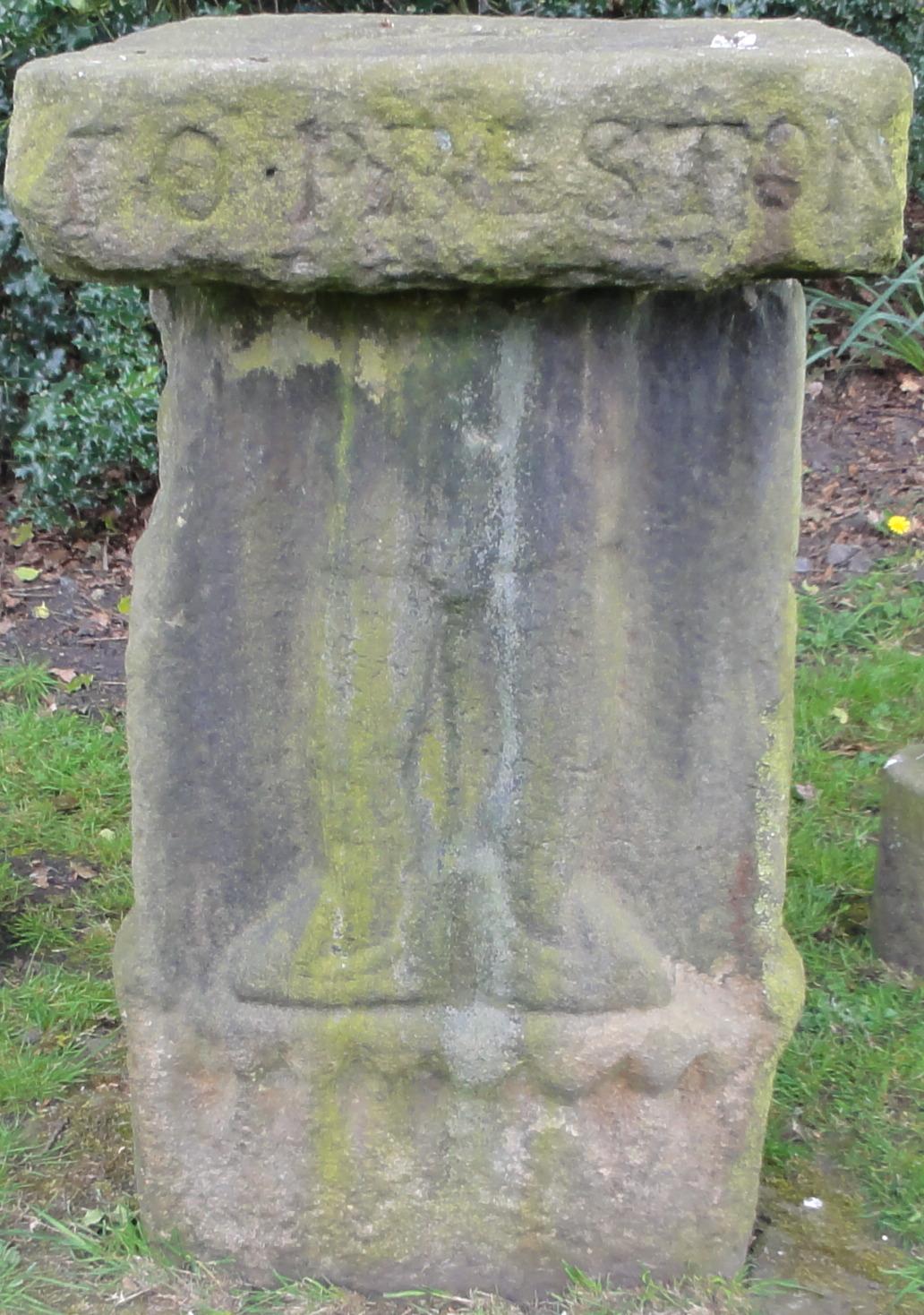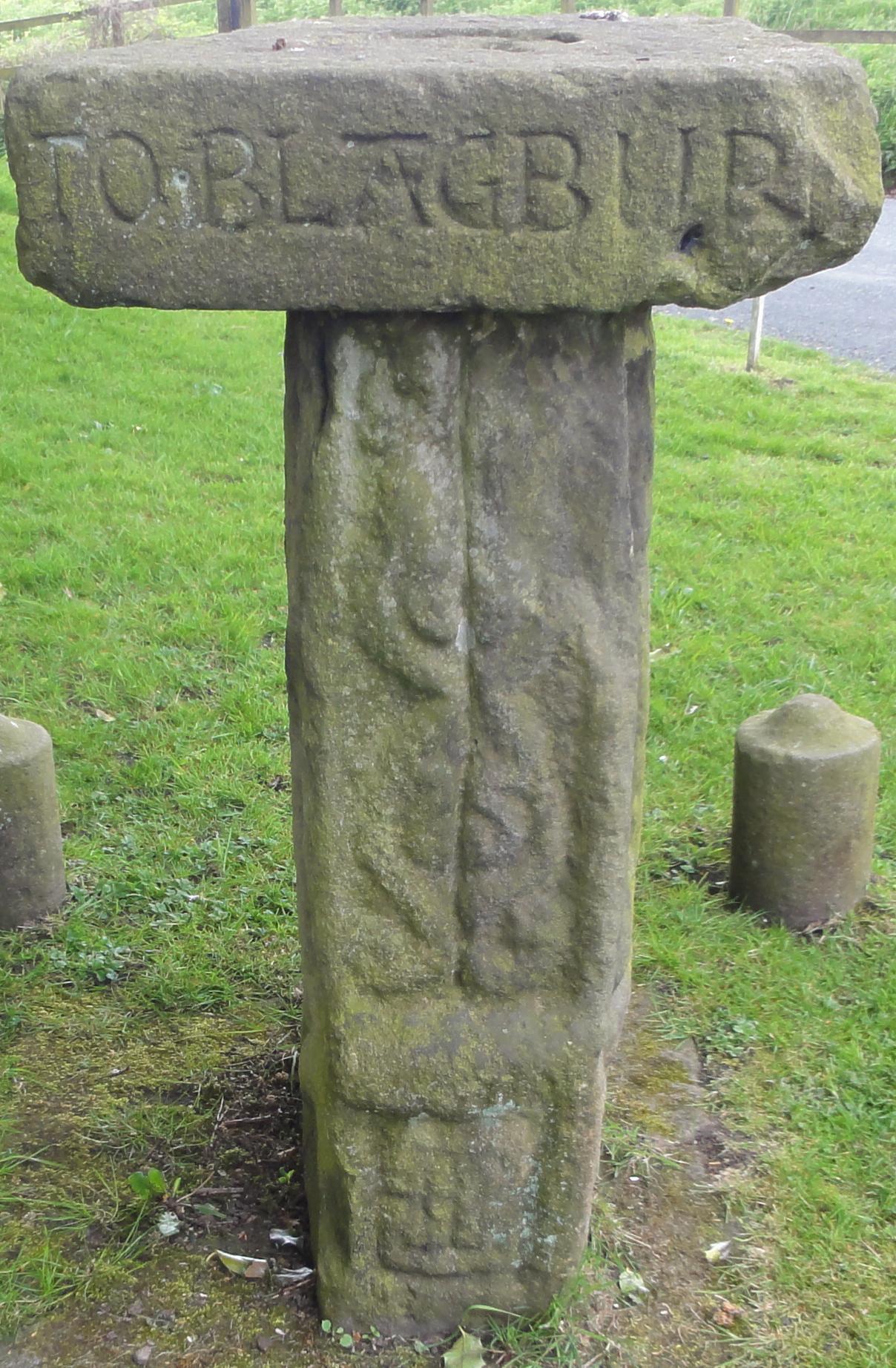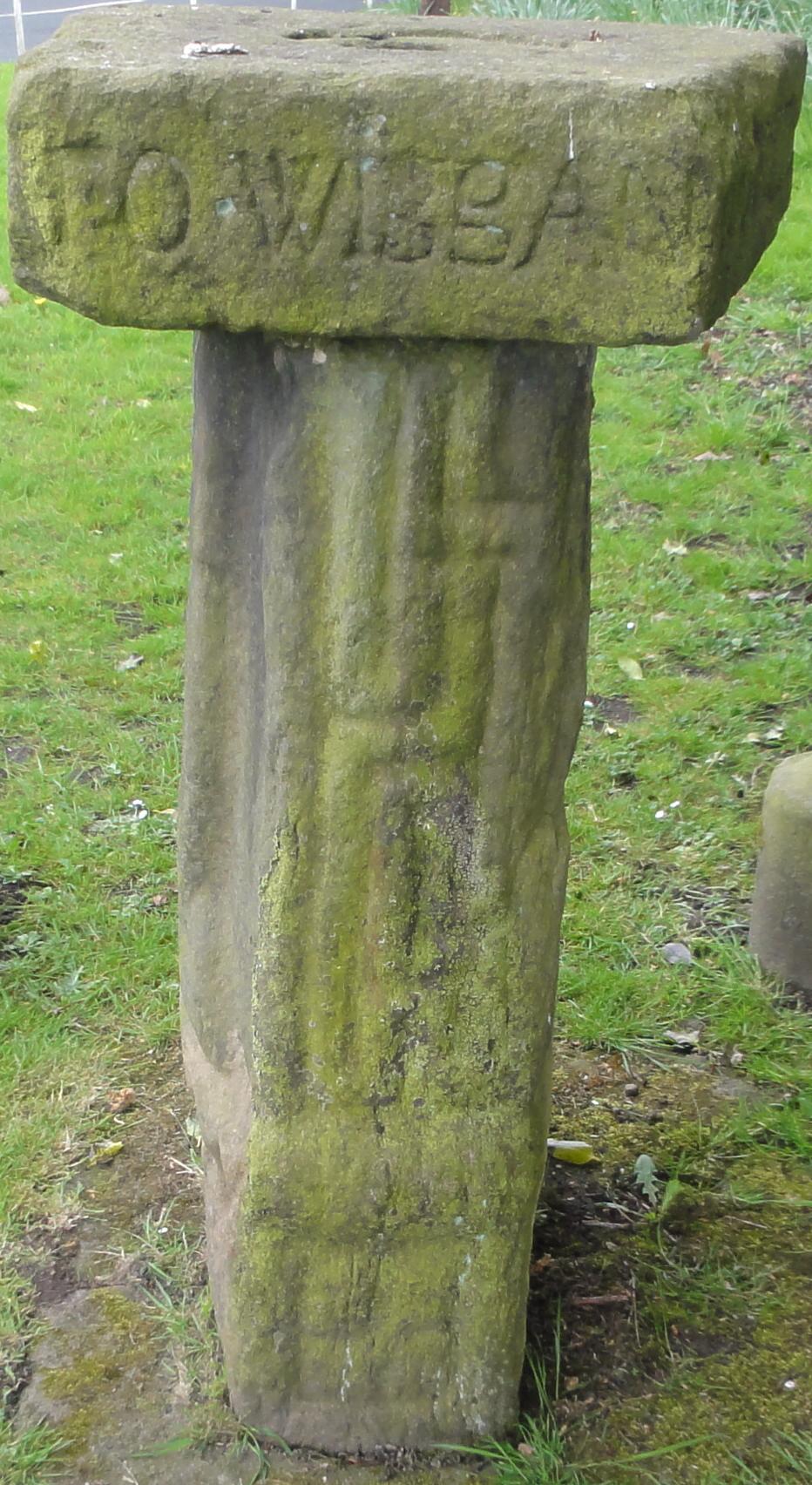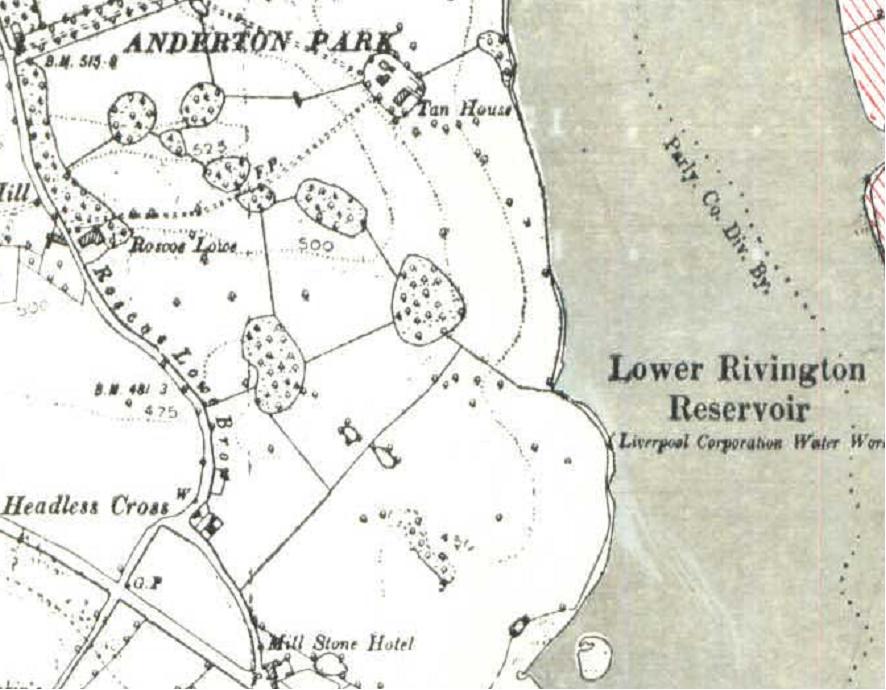Headless Cross (The Headless Boggart)
There are twelve grade II listed buildings and structures within Anderton, Lancashire that are nationally important and of special interest.2)
Andertons listed buildings are varied, reflecting its rural and historic importance, the Headless Cross or headless boggart at it is locally known is grade II listed, it is a scheduled monument. The cross or as it is locally known as the Headless Boggart is the oldest listed structure in Anderton and is a pre conquest, with 18th century additions, grade II, Historical Monument, listed building number 184255.3)
The location of the Headless cross is recorded in the 1911 publication, A History of the County of Lancaster: Volume 6, as being at Grimeford,4) but its exact location in Grimeford is not recorded.
The headless cross was moved around for some time after 1865 at one point being used as an ornament by W.H Lever, Lord Leverhulme, at his second stone Bungalow at Rivington. It was after a campaign by Cllr. C.J Sixmith that the Cross was saw sited in its current position in 1945.5) The cross was handed back to the town after death of Lord Leverhulmes in 1925.
There is also a ghost story and a story of long lost treasure somewhere under Anderton in a tunnel.
Headless Cross History
Cross Found
The origins of the headless cross suggest it was at one time a monument to St. Anthony at a monastery in Anderton.10) There has been much speculation about a pre reformation chapel supported by the Anderton Old Hall.
Press reports in the reign of Queen Victoria regarding the finding of the headless cross state that it was found on the soil of Rivington Church.11) The cross has a verbal history of once being interred with John Shaw, a local land owner and found during church renovations in the Victorian period. The cross is thought to have come from an early Roman Catholic Chapel, Lady Hall.
Cross Split Up
News reports in 1865 stated the lower parts of the monument were moved to Horwich whilst its corona or crown had been used in the build of a Catholic Chapel at Euxton Chorley, prior to 1853-55 the Cross was displayed inside Rivington Church.13)
Leverhulme
The cross or Headless Boggart was sited until 1911 in Grimeford14) and was some time later moved by William Lever, 1st Viscount Leverhulme who adapted the Headless Cross to make a sun dial at his Bungalow in Rivington. The monument was moved to its current position by his son the 2nd Viscount Leverhulme in 1925.15)
The lower half of the cross or Headless Boggart was finally sited in its current position after the death of Lord Leverhulme without its corona or crown, to be known thereafter as the headless cross.16)
The Corona
Although reports in 1865 stated the top of the cross was used in the building of a Catholic Chapel at Euxton, the Chapel has been checked and the top or corona is not present. However other information I have indicates that the upper section of this pre-Conquest stone ‘cross’ is at the Harris Museum at Preston.
The details I have been given of the top or corona section is that it is damaged on three sides, the face is a horned helmeted figure holding a sword before it. The cross has always thought to be from the Anglo-Saxon period of Lancashire, however the top being a spreading horns indicates a connection to the Danes. The top section of the cross has been dated to around 900AD.
The Base
The base is not square, on one side of the cross is the figure of a man from the waist down, this is the part that has resulted in the superstition that this is a headless boggart.
Another side of the cross is a trellis filled with geometrical ornamentation of horizontal and vertical straight lines repeated to form a band known as a fret; a modified version of T-fret; and a combination of vine scroll and frets.
The cross middle section was adapted as a sign post long ago reading “Preston, Wiggan, Boulton, and Blagburn”, in modern English, Preston, Wigan, Bolton and Blackburk.
The base of the monument is thought to be an Anglo Saxon wayside cross and as such is quite scarce in this area.
If however the Harris Museum corona does prove to belong to the this base, both being found in the same area, then local history has a new twist.
Headless Cross Ghost
The section that follows is an account of the history of the story of the Headless Cross ghost, sometimes legends have a base on facts, maybe somewhere under Anderton in a long forgotten tunnel where still to this day is valuable pre reformation church silver?
Pre Reformation
Sir John Hindeley is described as priest at Rivington in 1498, and on May 5th, 1521, Sir John Warying, priest,17) was one of the witnesses of a deed between Richard Pilkyngton and Peers Bradley, both of Rivington. By 1534 the little chapel at Rivington was a ruin. Sir John Warying, priest is likely last officiating Roman Catholic Priest at the pre-reformation Chapel.18)
Myths & Legend
On receiving news of the destruction of the Churches and the fate of others, the last Pre Reformation Chaplain at Rivington, who lived near the present location of the headless cross is said to have died in a tunnel underground escaping with the Silverware he had been ordered to take to safety. Legend has it that the priest got stuck in the tunnel and died trapped underground with the silverware. His body was never found. Many people are said to have seen a ghost at the Headless Cross. The current owner of house mentioned found the tunnel in their cellar many years ago, no-one in living memory has ever dared go down it and check where it goes. The tunnel is reputed to head toward Roscoe Lowe.
Stocks, Grimeford
Stocks c.10 metres west of Headless Cross Headless Cross , dated 1808, grade II, listed building number 18425620)
Village stocks were used as a form of physical punishment involving public humiliation, the victim was left out in all weather, sometimes resulting in death.
The stocks were designed to hold the person in a fixed placed for a period decided by a local court, usually the stocks were in a public place. A person in stocks could be the victim of anybody wishing to assault, revile or aim filth at them, like a pillory or the pranger.
In stocks a the person was placed with their feet locked in place, sometimes also their hands or head, boards were placed around the legs or the wrists.
The practice of using stocks was an example of torture, cruel and unusual punishment.

